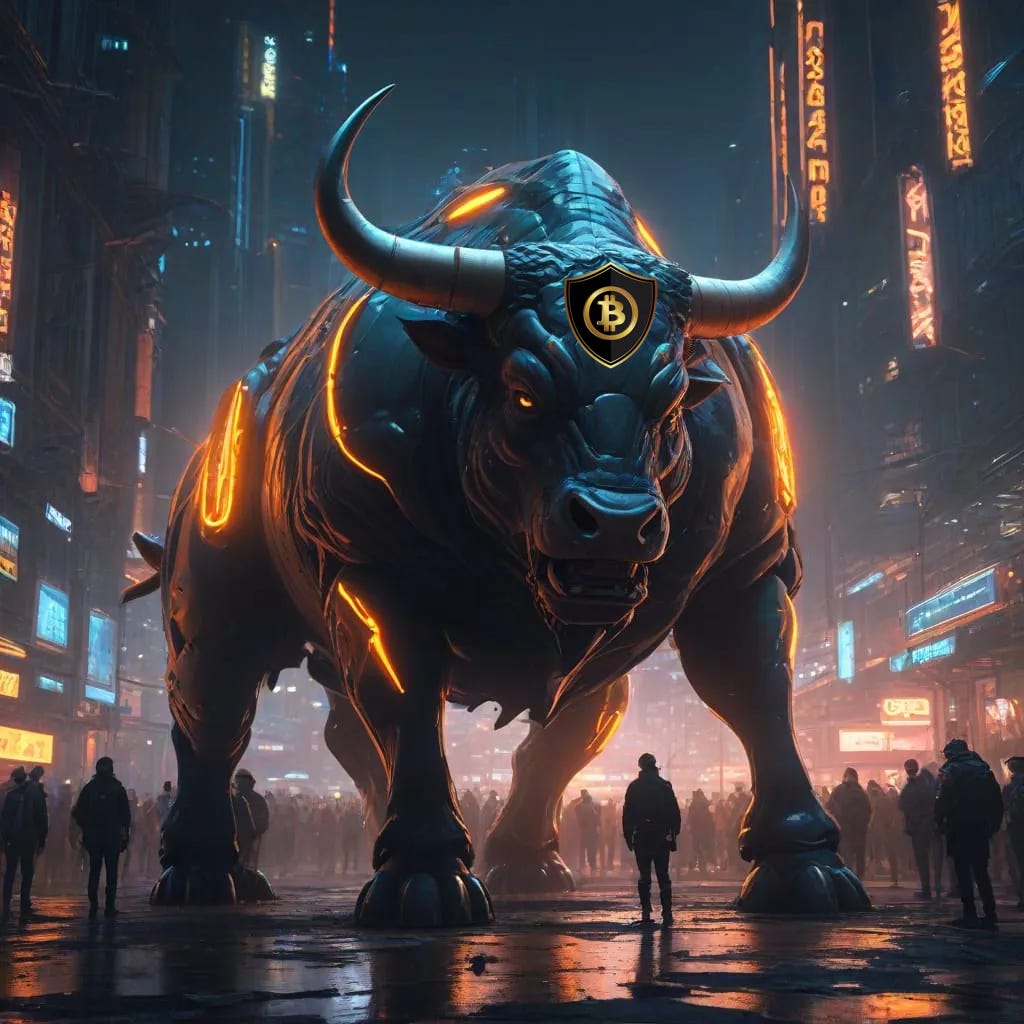The Altcoin Trap
Since the creation of Bitcoin in 2009, the altcoin market has exploded. By December 2024, more than 16,500 of these tokens had been created—most of them out of nowhere, without real value, except perhaps for stablecoins. Yet, the cycle repeats itself. A small group of insiders receives these tokens early, while the general public joins the game later, believing they are part of something meaningful. If you were not one of these insiders, you were never meant to win. Once the project reaches a profitable phase, the original holders cash out, leaving everyday investors with worthless tokens.
This is not a flaw in the system; it is a feature. If you are not one of the privileged few, you are the exit liquidity—“the village idiot.”
But the real issue is not just speculation, fraud, or the degenerate casino mentality induced by this ecosystem; it’s that these projects are abusively associated with Bitcoin. Most fail to recognize an undeniable truth:
👉 Bitcoin & “crypto” are not the same thing.
In this new bull run, expect to see a wave of new projects that, as always, are built on entirely different foundations. Understanding this distinction is essential.
The Truth About Altcoins
The truth about altcoins is simple: they are centralized. No matter the marketing promises, their centralization is evident in their pre-mined allocations, where developers, insiders, and early investors control the majority of the supply. These few individuals can manipulate the price, dictate governance, and shape the future of the project. This is the opposite of Bitcoin’s decentralization.
Despite their claims of innovation, altcoins rely on small centralized groups for mining, validation, and development. Their pre-sales, ICOs, and insider allocations create artificial demand, leaving retail investors to absorb the losses when early holders dump their tokens.
The result? A market vulnerable to manipulation, governance failures, and brutal collapses.
Bitcoin stands out as the only truly decentralized asset. Altcoins, on the other hand, are speculative vehicles controlled by a select few. They are parasites, feeding off Bitcoin’s credibility and momentum while offering nothing but short-term hype and long-term risk.
The sooner people understand this, the better.
Bitcoin as the Market Leader
Across all altcoins, the same predictable pattern repeats: insiders unload their pre-mined tokens at the peak of Bitcoin’s bull runs.
The result?
✅ Price collapses—inevitable due to increased selling pressure and supply-demand imbalances.
✅ Market cap inflation without real price appreciation—more tokens flood the market, but demand doesn’t increase.
✅ Value dilution—retail investors watch their holdings depreciate.
✅ Erosion of trust.
The outcome is always the same: measured in Bitcoin, altcoins trend to zero. When pre-mined tokens are dumped onto the public, insiders cash out, and retail investors are left with worthless assets. The most extreme version of this is the “exit scam” (rug pull)—where insiders deliberately exploit their advantage, extract wealth, and abandon investors. As long as this game works, they repeat it endlessly.
How the Cycle Works
With each bull run, Bitcoin’s growth fuels the hype cycle. Altcoins ride its momentum, attracting new naive investors through speculation, marketing, and psychological manipulation. Most are designed to capitalize on Bitcoin’s success rather than offer real innovation.
The cycle always plays out the same way: insiders profit, while 99% of retail investors get wrecked. Many so-called influencers are just paid promoters, pushing these schemes onto unsuspecting buyers.
Here’s how the ecosystem works:
🟠 Bitcoin Dominance – As the first and largest cryptocurrency, Bitcoin acts as the gateway for new investors. When Bitcoin performs well, optimism spreads across the market.
🟠 Bitcoin’s price increase creates a ripple effect:
A rise in price attracts attention, bringing in new investors who often explore altcoins for quick gains.
Altcoins are marketed as “the next big thing” or “Bitcoin killers,” promising faster transactions, lower fees, or smart contracts.
When Bitcoin surges, altcoins gain visibility, and their prices often spike—not due to intrinsic value, but because investors chase high-risk, high-reward bets.
The reality is simple: Bitcoin doesn’t need altcoins, but altcoins need Bitcoin. Without Bitcoin’s momentum, the entire altcoin market would collapse under the weight of its own speculation.
Recognizing this truth is the first step to avoiding the traps laid for retail investors.
Exploiting Bitcoin’s Success: The Mechanics of Hype and Speculation
Altcoins thrive by capitalizing on Bitcoin’s success, crafting narratives that position them as its natural successor, a competitor, or a necessary complement. Behind the narrative, there is often no real innovation—just a single objective: capturing speculative capital. Some of the most common narratives include:
"The Next Bitcoin" or "The Bitcoin Killer" – Altcoins like Ethereum, Litecoin, and Binance Coin (BNB) claim to offer better scalability, faster transactions, or improved technology, implying they could replace Bitcoin.
"Decentralized Finance (DeFi) is the Future" – Ethereum, in particular, fuels speculation through DeFi, branding smart contracts as a revolution capable of replacing traditional finance. Investors buy in, believing they are participating in a financial paradigm shift.
"Web 3.0" and NFTs – Projects like Solana, Polkadot, and Cardano present themselves as the backbone of a decentralized internet, preying on the fear of missing out on the next wave of technological disruption.
"Institutional Adoption" – Some altcoins push the narrative that institutions are backing their project, hoping to increase investor confidence and drive demand.
Once a well-crafted narrative is in place, the marketing machines activate to amplify it. The hype is not accidental—it is orchestrated:
Social Media Manipulation – Altcoins flood Twitter, Reddit, Telegram, and Discord with influencers, behind-the-scenes sponsored promotions, and viral campaigns designed to create urgency. The goal? Push retail investors to buy in before the insiders exit.
Celebrity Endorsements – Some altcoins use celebrities, influencers, or public figures to lend credibility to their project. From casual mentions to full-fledged partnerships, these endorsements drive prices up… until the inevitable rug pull.
Fake "Partnerships" and Announcements – Projects often claim collaborations with major companies to create an illusion of legitimacy. Retail investors believe in these partnerships, unaware that the announcements are often exaggerated or meaningless.
Airdrops and Token Giveaways – Giving away free tokens attracts attention and creates a temporary price spike. But more often than not, it’s a trap—once enough hype builds up, insiders sell off, leaving retail holders to absorb the losses.
The cycle repeats every bull run. Narratives, advertising, and market psychology draw in new speculators, while insiders time their exits perfectly. Meanwhile, Bitcoin continues to do what it was designed for: providing a secure, decentralized alternative to a failing monetary system. The difference? Bitcoin doesn’t need marketing campaigns, celebrity endorsements, or artificial hype. Its value proposition stands on its own.
The essential question to ask: Are you investing in real innovation, or just the latest illusion?
The "Pump and Dump" Playbook
Phase 1: Setting the Trap
Insiders distribute pre-mined tokens among themselves or handpick early investors, often at heavily discounted prices.
Pre-sale funding establishes initial liquidity, creating the illusion of demand.
The marketing machine kicks in—social media campaigns, influencer endorsements, and coordinated messaging create a sense of urgency and scarcity. The goal? Lure retail investors in through fear of missing out (FOMO).
Phase 2: The Dump Begins
As retail investors flood in, the price rises—not due to real value creation, but because demand has been artificially generated.
Insiders begin unloading their holdings. Since they acquired their tokens at near-zero cost, they now sell into the rising market, extracting massive profits.
The supply of tokens on the market increases, but demand doesn’t keep up. Without real economic foundations, the price collapses.
Phase 3: Retail Investors Are Left Holding Worthless Tokens
By the time most investors realize what’s happening, it’s too late. The token’s value has plummeted, and those who bought at the height of the hype are left with an asset rapidly approaching zero.
The insiders who orchestrated the pump have already cashed out—the wealth is secured, the narratives abandoned. The cycle resets, ready for the next bull market.
In this toxic game, it’s not about technology, decentralization, or innovation. It’s about liquidity extraction—a rigged economic game where the odds are stacked against those who don’t understand its mechanics. Bitcoin operates outside of this game. Altcoins, on the other hand, are designed to play it.
The question isn’t whether the next cycle will repeat. The question is: Will you be on the losing side?
Deceptive Strategies and Red Flags to Watch For
Unrealistic Promises: Many altcoins use exaggerated roadmaps, overhyped technology, or fake partnerships to build a narrative around their token. They sell hope rather than delivering real utility, relying on speculation and market psychology to drive demand.
Lack of Transparency: Altcoin projects with anonymous or opaque teams often avoid disclosing key details such as token distribution or future plans, creating an aura of mystery and exclusivity that attracts retail investors.
No Real Use Case: Many altcoins push the narrative that they have disruptive technology or solve a major problem, even when they lack practical utility or a viable product. This can mislead retail investors into believing the token holds real value, often through a flashy presentation and an abundance of sleek visuals—when, in reality, it is nothing more than a speculative gamble.
Influencer Endorsements: Fake influencer endorsements or paid partnerships are a common tactic to promote altcoins.
Bitcoin: The Only Truly Decentralized “Token”
Bitcoin has no CEO, no pre-mine, and no insiders controlling its supply. Its monetary policy is encoded and cannot be altered to benefit any individual or group. No one can print more Bitcoin out of thin air, censor transactions, or manipulate the network.
Altcoins, on the other hand, are typically launched by teams that allocate a large portion of the tokens to themselves before selling them to the public. They control governance, development, and often even the supply itself. They position themselves as improvements over Bitcoin—faster, more scalable, or with additional features. But speed and complexity come at a cost: centralization. Once again, altcoins rely on trusted parties, validator networks controlled by insiders, or governance structures that can be changed at will.
Bitcoin operates on entirely different principles. Its fair launch, proof-of-work security, and decentralized consensus prevent any single entity from manipulating its supply or market dynamics. If you hold Bitcoin, you are not participating in a speculative game—you are aligning yourself with the most secure and decentralized monetary network ever created.
Bitcoin exists outside the system while infiltrating it. Governments may try to regulate access points, but they cannot change the protocol, censor transactions, or seize funds without access to private keys. Bitcoin thrives in adversarial environments because it is designed to resist centralized control.
If you hold altcoins, you are speculating on assets controlled by insiders. These projects rely on hype, manipulation, and marketing narratives to survive, and we have over a decade of history showing where this always leads. Bitcoin’s value, in contrast, comes from its immutable rules, decentralized security, and ability to function without trust. While altcoins rise and fall in speculative cycles—ultimately collapsing one after another—Bitcoin continues to operate as the hardest money ever created in human history.
In a sea of altcoins promising quick gains and miracle solutions, it is crucial to remember that Bitcoin is the only truly decentralized, reliable, and long-term monetary asset. By positioning yourself in Bitcoin now, you are choosing stability, integrity, and financial independence. Don’t be swayed by fleeting illusions—choose security and the real potential of a currency that withstands time and manipulation.
Act now, before the opportunity slips away.





